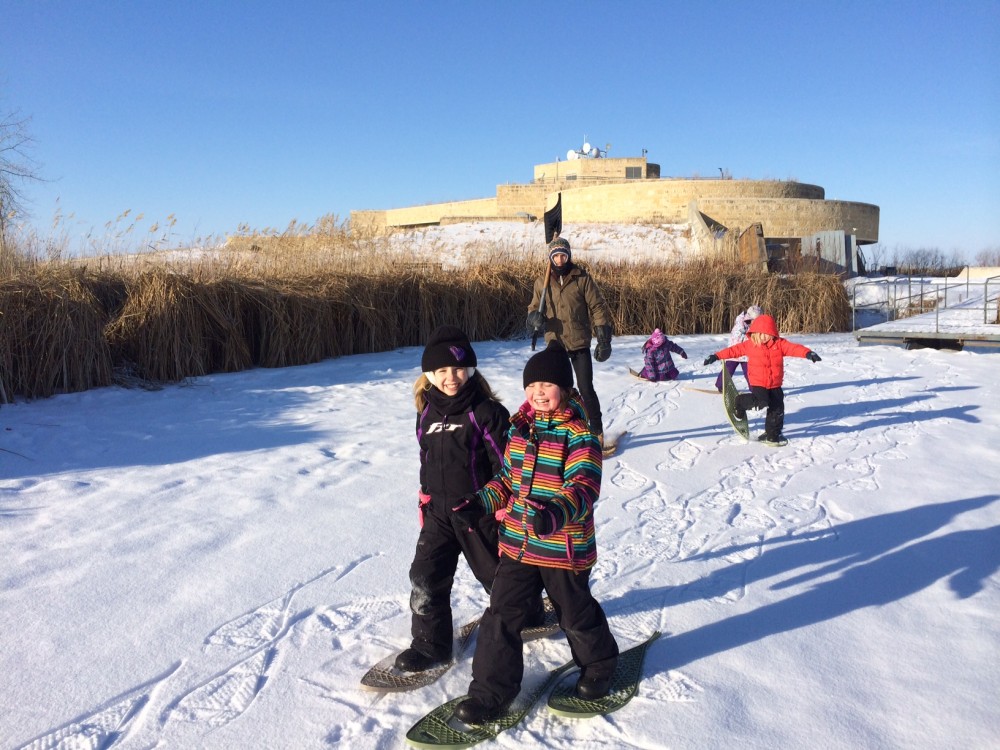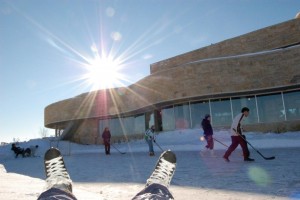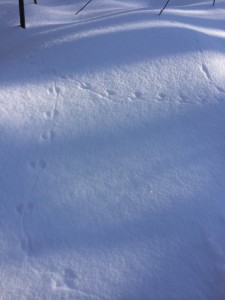Type and press “enter” to search
Exploring the Marsh in Winter
Winter Fun at the Marsh
Although the marsh is frozen for most of the winter, there are still quite a few activities that allow visitors to enjoy and explore the wonderful world of wetlands and discover what creatures call this place home.

Kids snowshoeing at the marsh
Snowshoeing
Snowshoeing has been around for many years. It is believed that indigenous people of North America developed them based on nature’s many examples such as hares, rabbits, lynx and bobcats whose over-sized feet allow them to move quickly through deep snow. Traditional snowshoes were made of a hardwood frame with rawhide lacing called “babiche”. They were essential for fur traders, trappers and anyone whose living depended on the ability to get around in areas of deep and frequent snowfall. Modern snowshoes are similar in shape, but most are made of materials such as lightweight metal, plastic, and synthetic fabric.
Today’s snowshoes are mainly used for recreation, primarily by hikers who like to continue their hobby in wintertime. Snowshoeing is easy to learn, and in appropriate conditions is a relatively safe and inexpensive recreational activity. The Oak Hammock Marsh Interpretive Centre provides guided snowshoes hikes throughout the day and visitors can also borrow a pair if they wish to explore the marsh on their own.
Skating
A study suggests that the earliest ice skating happened in southern Finland more than 3,000 years ago. The original skates were probably made of sharpened flattened bone strapped to the bottom of a shoe. Skaters did not actually skate on the ice, but rather glided on top of it. The skates as we know today emerged when a metal blade with sharpened edges was used in the 13th or 14th century. These skates cut into the ice instead of gliding on top of it. Modern skates have relatively stayed the same since then.
The frozen marsh makes the perfect natural skating rink, as long as the snow cover is not too deep. We keep an area clear of snow close to the building, called Cattail Pond, for our visitors who wish to explore the marsh on skates. This area is also used for those wanting to play pond hockey. We provide hockey stick, sponge puck and nets.
Looking for animal tracks in the snow
Even if most wildlife is either gone south or sleeping until the spring, a few marsh residents remain active all year long. You can easily observe signs of wildlife activity after a snowfall when fresh tracks in the snow tell stories of the whereabouts of mice, birds, coyotes, rabbits and minks. Look for small holes in the snow with tracks leading to it indicating a mouse moving around or the imprint of the wing feathers of a Snowy Owl as it tries top capture a meal. Each tracks will tell a story and it is up to us to try and determine what they are trying to tell you. What would the tracks of a jackrabbit and those of a coyote tell you?


